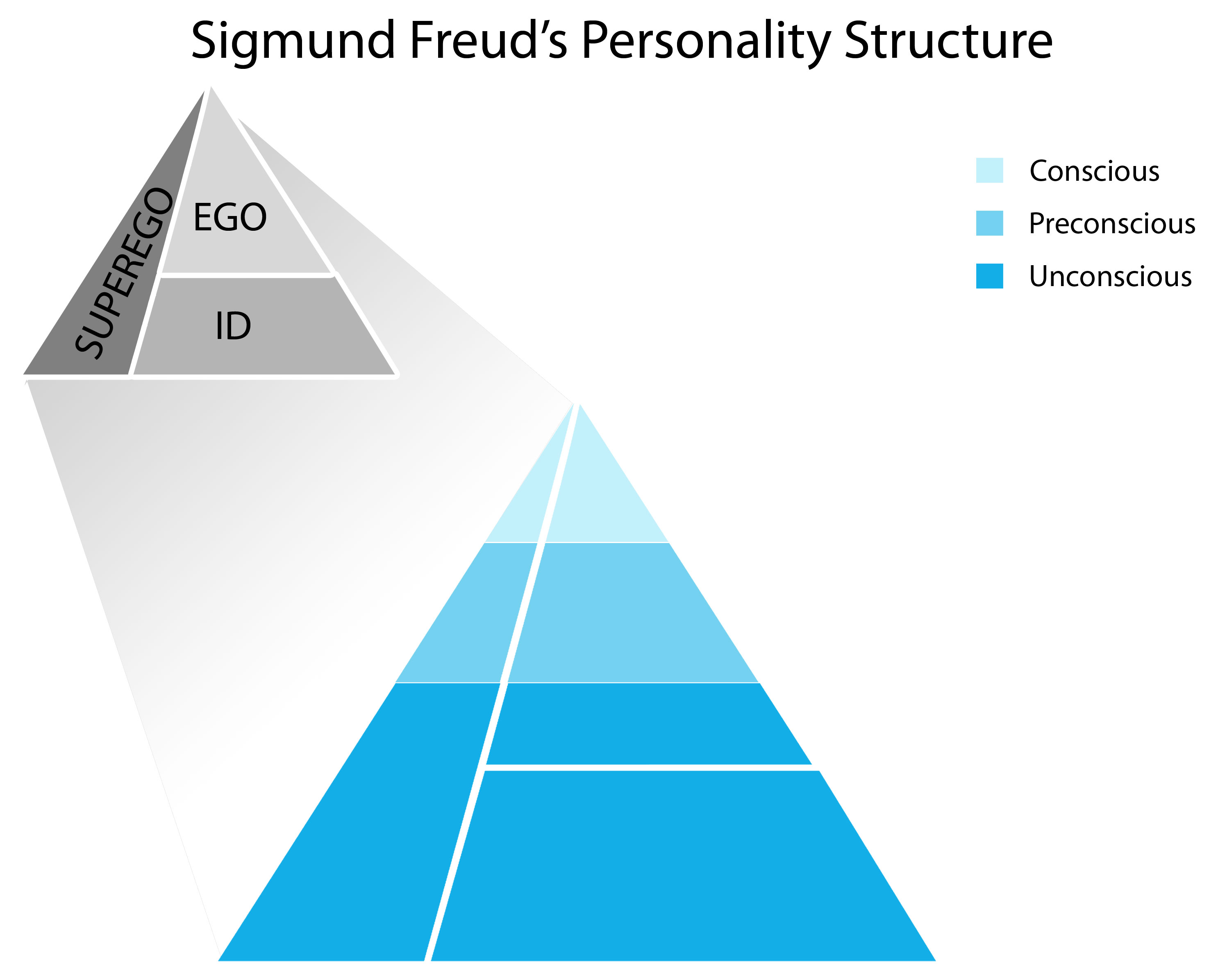

It directs impulses for hunger, thirst, and sex. The unconscious id contains our most primitive drives or urges, and is present from birth. The job of the ego, or self, is to balance the aggressive/pleasure-seeking drives of the id with the moral control of the superego. Seeing them as a reflection of unconscious desires, linguists today have found that slips of the tongue tend to occur when we are tired, nervous, or not at our optimal level of cognitive functioning (Motley, 2002). Speech errors such as this are quite common. Freud suggested that slips of the tongue are actually sexual or aggressive urges, accidentally slipping out of our unconscious. You’ve probably heard of a Freudian slip, the term used to describe this. For example, we sometimes say things that we don’t intend to say by unintentionally substituting another word for the one we meant. According to Freud, unacceptable urges and desires are kept in our unconscious through a process called repression. Our unconscious refers to that mental activity of which we are unaware and are unable to access (Freud, 1923). He said that only about one-tenth of our mind is conscious, and the rest of our mind is unconscious. To explain the concept of conscious versus unconscious experience, Freud compared the mind to an iceberg ( ). However, Freud continued to work to refine talk therapy and build his theory on personality. Breuer disagreed with Freud, which soon ended their work together. Based on Breuer’s description of Anna O.’s treatment, Freud concluded that hysteria was the result of sexual abuse in childhood and that these traumatic experiences had been hidden from consciousness. Despite the fact the Freud never met Anna O., her story served as the basis for the 1895 book, Studies on Hysteria, which he co-authored with Breuer. called his treatment the “talking cure” (Launer, 2005). and discovered that allowing her to talk about her experiences seemed to bring some relief of her symptoms. He spent 2 years (1880–1882) treating Anna O. In Freud’s day, these symptoms were commonly referred to as hysteria. had been caring for her dying father when she began to experience symptoms such as partial paralysis, headaches, blurred vision, amnesia, and hallucinations (Launer, 2005). During this time, Freud became intrigued by the story of one of Breuer’s patients, Bertha Pappenheim, who was referred to by the pseudonym Anna O. In the early years of his career, Freud worked with Josef Breuer, a Viennese physician. However, Freud was the first to systematically study and theorize the workings of the unconscious mind in the manner that we associate with modern psychology. There was no such thing as a degree in psychology at the time that he received his education, which can help us understand some of the controversy over his theories today. When reading Freud’s theories, it is important to remember that he was a medical doctor, not a psychologist. Sigmund Freud (1856–1939) is probably the most controversial and misunderstood psychological theorist.

By the end of this section, you will be able to:


 0 kommentar(er)
0 kommentar(er)
